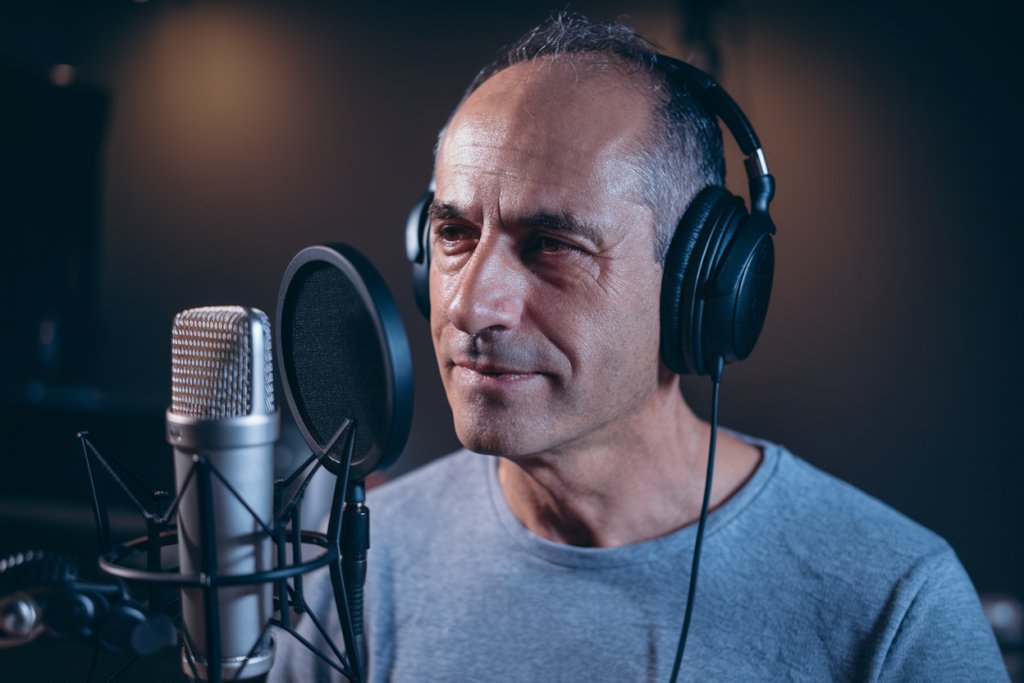Sicily stands out as a unique gem in Italy, not just for its breathtaking landscapes but also for its rich cultural tapestry. The Sicilian dialect is a vibrant reflection of this distinctiveness, showcasing influences from various civilizations that have graced the island over centuries. I find it fascinating how Sicilian differs from other regional dialects, weaving together elements from Arabic, Greek, and Spanish to create something truly exceptional.
In this article, I’ll explore the nuances of the Sicilian language compared to those found in other Italian regions. From pronunciation quirks to vocabulary differences, understanding these distinctions reveals much about Sicily’s identity and heritage. Join me on this journey through words that shape a culture unlike any other in Italy.
Overview of Sicilian Distinction
Sicilian stands out among Italian regional dialects due to its unique characteristics shaped by historical influences. The dialect incorporates elements from Arabic, Greek, and Spanish, reflecting Sicily’s diverse heritage.
Pronunciation Differences
Pronunciation in Sicilian differs significantly from standard Italian. For instance:
- Vowel Sounds: Sicilian features distinct vowel pronunciations that may not exist in other dialects.
- Consonant Usage: Certain consonants are pronounced with greater emphasis, creating a more robust sound.
Vocabulary Variations
Sicilian vocabulary includes words borrowed from various languages:
- Arabic Influence: Terms like “zagara” (orange blossom) showcase this influence.
- Spanish Contributions: Words such as “pescado” (fish) highlight the impact of Spanish rule.
Grammatical Nuances
Grammatical structures also set Sicilian apart:
- Article Usage: The definite article may change based on the noun’s gender and number.
- Verb Conjugation: Unique conjugation patterns appear in everyday speech, differing from standard Italian forms.
These elements combine to create a rich tapestry that defines the Sicilian dialect, emphasizing its cultural significance and distinct identity within Italy.
Historical Context of Sicilian Language
Sicilian’s linguistic development reflects the island’s complex history. Influences from various civilizations have shaped its unique characteristics, making it distinct from other Italian dialects.
Influence of Ancient Civilizations
Ancient Greek settlers brought their language to Sicily around the 8th century BC, contributing significantly to the early evolution of Sicilian. This influence is evident in vocabulary and place names throughout the region. Roman rule further integrated Latin elements into the dialect, creating a blend that laid the foundation for modern Sicilian. Additionally, interactions with Phoenicians introduced terms related to trade and agriculture, enriching the linguistic landscape.
Norman and Arab Contributions
The Normans’ conquest in the 11th century introduced new vocabulary and grammatical structures influenced by Old French. Their administration used a mix of languages, including Latin and Arabic, leading to a fusion in everyday communication. The Arab presence during this period also left a lasting impact; many Arabic words entered Sicilian vernacular, particularly in areas like agriculture (e.g., “cane” from “qānī,” meaning reed) and science (e.g., “zero” from “ṣifr”). These contributions solidified Sicilian’s identity as a rich tapestry woven from diverse historical threads.
Linguistic Features of Sicilian
Sicilian exhibits distinctive linguistic features that highlight its unique identity among Italian dialects. From phonetic characteristics to vocabulary variations, each element reflects Sicily’s rich cultural tapestry.
Phonetic Characteristics
Phonetics in Sicilian diverges notably from standard Italian. I notice distinct vowel pronunciations, particularly with the vowels “a,” “e,” and “o.” For instance, the word “casa” (house) may sound more like “casa” but with a more pronounced ‘a’ in Sicilian. Consonant emphasis also stands out; voiceless consonants often receive stronger articulation, giving the dialect a robust auditory quality. The use of diphthongs adds complexity as well; for example, “u” can shift to “ou,” altering words such as “fuoco” (fire). These phonetic traits contribute to the dialect’s melodious yet assertive sound.
Vocabulary Variations
Vocabulary in Sicilian contains numerous borrowings and unique terms that set it apart from other regional dialects. I observe significant Arabic influences reflected in everyday language; terms like “zagara” (orange blossom) and “mangiar” (to eat) showcase this influence vividly. Spanish contributions are evident too, with words like “pescado” (fish) enriching local vernacular. Additionally, specific expressions capture cultural nuances; for example, “taliare” means “to look,” while standard Italian uses “guardare.” This blend of lexical diversity illustrates how historical interactions have shaped Sicilian vocabulary into a rich linguistic resource reflective of its vibrant heritage.
Comparison with Other Regional Languages
Sicilian exhibits distinct features compared to other regional languages in Italy. I’ll explore its differences from standard Italian and its relationship with Neapolitan.
Distinctions from Italian Standard
Sicilian diverges significantly from standard Italian in several aspects. Pronunciation varies, notably in vowel sounds; Sicilian often employs open vowels that lend a melodious tone absent in standard Italian. Vocabulary includes numerous loanwords reflecting the island’s history, such as “cuddura” (bread), which is unique to Sicilian contexts. Grammatical structures also differ, particularly in article usage—where Sicilians might use “u” or “a,” rather than the standard “il” or “la.” These elements contribute to a dialect that feels rich and vibrant, showcasing Sicily’s cultural legacy.
Similarities and Differences with Neapolitan
Sicilian shares some similarities with Neapolitan but maintains distinct characteristics that highlight its uniqueness. Both dialects exhibit influences from historical conquests and trade, resulting in shared vocabulary items like “pasta” for paste. However, their phonetic traits set them apart; Sicilian emphasizes diphthongs while Neapolitan tends to simplify vowel combinations. Additionally, grammatical structures vary; for instance, verb conjugation patterns differ markedly between the two dialects. Despite these distinctions, both reflect their respective regions’ cultural identities and histories within Southern Italy’s linguistic landscape.
Cultural Significance of Sicilian Language
Sicilian language plays a vital role in the cultural identity of Sicily. It serves as a living testament to the island’s rich history and diverse influences. The dialect not only reflects local traditions but also carries the weight of centuries of conquests, migrations, and trade.
The historical context enriches Sicilian language, showcasing its evolution through various civilizations. Greek settlers introduced foundational vocabulary, while Latin elements from Roman rule contributed significantly to its structure. Arabic influences emerged during the Arab occupation, adding unique terms that hint at agricultural practices and local flora. These layers culminate in a dialect that embodies Sicily’s multifaceted heritage.
Phonetic characteristics significantly enhance the cultural significance of Sicilian. Distinct vowel pronunciations create an auditory experience unique to the island. Strong articulation of voiceless consonants adds depth and richness not found in standard Italian. The use of diphthongs further complicates its sound profile, contributing to the musicality inherent in spoken Sicilian.
Vocabulary variations highlight cultural nuances within everyday life on the island. Words borrowed from Arabic, such as “zagara” (orange blossom), emphasize connections to agriculture and local customs. Spanish-derived terms like “pescado” (fish) reflect historical trade relationships across Mediterranean waters. These lexical choices illustrate how linguistic elements intertwine with social practices and regional identity.
Understanding these distinctive features fosters appreciation for Sicilian culture beyond mere linguistics. It’s essential for recognizing how language shapes personal identity among locals who speak it fluently or learn it as part of their heritage preservation efforts. This connection between language and culture reinforces pride among Sicilians while distinguishing them within Italy’s broader linguistic landscape.
In comparison with other Italian regional languages, such as Neapolitan or standard Italian, Sicilian stands out prominently due to its robust character shaped by numerous historical strands woven together over time. While similarities exist between these dialects—primarily rooted in shared Southern Italian heritage—the profound differences testify to Sicily’s unique journey through history.
The cultural significance of Sicilian language manifests itself through both spoken communication and artistic expression such as poetry, music, and theater performances deeply embedded in local customs. Each element contributes meaningfully towards preserving this vibrant dialect against modernizing pressures threatening many regional languages worldwide today.
Conclusion
Sicilian’s distinct linguistic features and rich cultural history truly set it apart from other Italian dialects. The blend of influences from Arabic to Greek reflects a complex heritage that resonates in everyday speech.
I’ve come to appreciate how the unique pronunciation and vocabulary not only define the dialect but also connect Sicilians to their past. As modernization continues to influence language, preserving the Sicilian dialect becomes essential for maintaining its vibrant identity and cultural significance.
Understanding these nuances deepens my appreciation for Sicily’s diverse heritage and strengthens my connection to this beautiful island.








